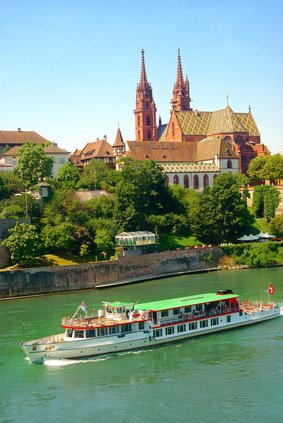 We flew British Airways from San Francisco Int. Airport, to Heathrow Airport, and then into Frankfurt Airport. Heathrow has a special assistance lounge. Ask for assistance when leaving your plane, and they will take you to the lounge. You give them your boarding pass and let them know what sort of help you need, and when the time comes for you to board your departing flight, they either let you know that someone will meet you at the gate with an aisle chair if requested or they take you in a buggy to your gate.
We flew British Airways from San Francisco Int. Airport, to Heathrow Airport, and then into Frankfurt Airport. Heathrow has a special assistance lounge. Ask for assistance when leaving your plane, and they will take you to the lounge. You give them your boarding pass and let them know what sort of help you need, and when the time comes for you to board your departing flight, they either let you know that someone will meet you at the gate with an aisle chair if requested or they take you in a buggy to your gate.
If you are taking the S-bahn to and from the Frankfurt airport, be sure that the wheelchair user can take a few steps in order to get in and out of the train- I don’t think that there are hand crank lifts available for the S-bahn. Also, if arriving at the airport, allow plenty of time. We arrived at platform 1 of the S-bahn station, and found an ancient staircase lift that was locked up. The intercom next to it worked, but the woman told me there was no lift on platform 1.
Someone who was fluent in both English and German offered to help out, and we were then told someone would come and help with the stair lift. After we waited 15 minutes, no one had come, so we decided just to take the escalator up, again something that wouldn’t work for someone unable to stand. The Sky Line in the Frankfurt Airport is entirely wheelchair accessible. The doors to get out are opposite the doors to get in, so you don’t need to worry about turning around, or going backwards off the car.
The hostel system in Germany is very easy to use, especially over the internet, and it will say whether the hostel is handicapped accessible. I booked dormitories, and they upgraded us to the wheelchair accessible rooms free of charge (we were traveling end of March, beginning of April, so in high season, you may want to contact the hostel directly to ensure that you book the accessible room). We stayed in hostels in Koln (there are 2, we stayed in Deutz, which is closer to the city center, but I believe both are accessible), and in Heidelberg.
The bathroom in Koln wouldn’t work for someone unable to stand, but the bathroom in Heidelberg had easy to use bars for the toilet, a roll-in shower with a seat, an adjustable mirror, and an emergency pull cord. It was the best equipped handicapped accessible bathroom I have ever seen. Both provide comforters as well as linens, and the hostels were new and very clean. One thing to consider about staying in the Koln-Deutz hostel is that it is either a long walk over the Deutzer bridge, or a quick 4-6 euro taxi ride as the Koln Underground is not accessible, so you may want to consider staying in the Ibis hotel at the train station if you need an afternoon nap.
To get to the Heidelberg hostel is about 7.50 euros for a taxi from the train station, or there’s a stop on the 33 bus line for the Jugendherberge. The 33 runs the whole length of town. As for the hotels, we experienced wonderful hospitality at the INNdependence Hotel in Mainz. We used them as home base, and they were gracious enough to hold bags for us, and ensure that we made it to and from Frankfurt Airport without trouble. The bathroom is fully accessible, with the exception of it not having a seat in the shower- we simply used one of the seats from outside on the balcony- rinsed off and warmed up.
In Bacharach, the Hotel Gelber Hof was wonderful. Herr Mades instructed us to choose between room 6 and room 8- we chose room 8 because the toilet was a little easier to reach (the bathrooms are not wheelchair accessible). Also, the restaurant for breakfast is 3 stairs up.
We primarily used the train and the K-D boat cruise line for transportation. Heather can take a few steps if necessary. If that is not a possibility, you will want to contact the mobility service so that they can provide small hand crank lifts to get you up/down the 2-3 steps into and out of the train. Contacting the mobility center is easy to do on the Bahn website (clicking on “int. guests” will allow you to access the form in English).
Another tip for the trains is to check the signs on the platforms, which show you exactly which cars have handicapped seating, and often an accessible WC. We found everyone, conductors, train station staff, other travelers, to be very quick to help also. In Rick Steves guide, he says that the Koblenz train station is fully accessible- it is not. We took a train there from Koln in order to take the K-D line. Rick provides a pretty good map of the front of the train station, but going with a more detailed map of the front and back would be helpful. The platform we got off at luckily had access to the freight elevator, and the conductor very nicely escorted us to the back of the train station.
From there, I believe you can take a right and go down the sidewalk all the way to the underpass- we went through the parking garage and the Mercedes lot and then turned right, and were able to get to the underpass that way. After the underpass, we took the first right back up to the front of the train station, and you can utilize any of Rick’s options from there.
Rick’s assessment of Koblenz as not a nice town is a little harsh- it’s a nice walk down to the K-D boat dock. Be careful when planning your trip, especially if traveling outside the high season, because the K-D line doesn’t run at all during the winter, and in the spring and fall has a limited schedule. That said, I highly recommend taking the K-D line- if you get a railpass, chances are good that they won’t check it. We got a 4-day Germany pass, and ended up being able to use it 5 days because the minute they saw the rail pass envelope, they waved us on.
Two of the boats we took were totally wheelchair accessible, with an accessible WC, and one (the Jeverland) was barely so, with the wheelchair user stuck in the smoking section. It did happen to have an accessible bathroom, but it was down a flight of stairs- go figure The view of the river and the castles from the boats is amazing. On our last day, we redid our whole route by train, and it was far less spectacular.
Town by town, we recommend the Gutenberg museum in Mainz- just ask to use the elevator, and the room across the walkway from the museum store has some printing presses you can use to make your own prints. A very cool souvenir, and they ask for donations only. The trams in Mainz are fully accessible, and the buses lower to allow for a 1-step entry in the backdoor. It is free for wheelchair users and companions. Also, the Mainz TI near the train station closed, and there is now only the TI by the Dom, accessible by bus or taxi. The public transit office which is now where the TI was is happy to explain how to get to the other TI.
Koln is amazing, but a city nonetheless, and more intimidating than the towns. Currently, there is major construction on the stairs leading from the train station to the Dom, so in order for wheelchair users to get out that direction, they can either use the taxi entry, or the dirt path that goes out to the right (the path to the left leads to the stairs) beyond the taxi entry, facing the Dom. This year, the TI moved from across from the Dom to the train station side of it. They well-marked the path from the old to the new, but if you take the dirt path from the train station, you’ll now walk right past it. There is one step to enter, and then the TI store is upstairs and inaccessible. They are happy to assist at the desk downstairs however.
To get to the Dom from the TI or the train station, you must take surrounding streets to the opposite side of the Dom. If you are approaching from the waterfront, there is a ramp with several switchbacks that goes up next to the Ludwig Museum where the stairs go up. There is an English tour at the Dom (when we went it was at 2:30pm), which I highly recommend. It is E4 for the wheelchair user, and free for the companion (if the wheelchair user is a student, it is only E2). This is the only way visitors can enter the nave, where there is a clear view of the case holding the relics of the Three Wise Men. There is one step to enter the nave. After the tour, there is a slide show across the square in the Dom Forum. They have an elevator in the back, but be sure to ask someone to have them come get you after the show is over- you can’t get back to the elevator yourself without setting off an alarm (or if you have an able-bodied companion they can take care of this- going back up and getting help that is, not setting off the alarm.) The Chocolate Museum is fully accessible, with only a small step at one end of the footbridge.
St. Goar is a treasure. If you can, take the tourist train to Burg Rheinfels, just for the hilarious experience. The driver is hysterical, and very helpful. The music, we were told, is very “German touristy.” Unfortunately, it is a step up into the train seats, and then the wheelchair must fold up to fit in the front seat. Once up at the castle, the cobblestones are VERY rough. The little store is fun to look around, and the restaurant is supposed to be very good. The man at the ticket office did not charge us to enter because he knew we wouldn’t get very far, but he held our bags and opened the gate for us anyhow. We made it in about 20-30 ft, up to a doorway on the right, with beautiful views, but the path to the museum was too steep. It might be possible with a motorized scooter, but not a manual wheelchair.
Almost all the stores have a couple of stairs to enter, but on the other hand, most of their goods are in the window. Just get the storekeeper’s attention, and they’ll be happy to come out and help. One jewel- Stefan’s Wine Paradise, is at the far end of town from the castle by the car ferry (the car ferry is something impressive to watch also). We were looking at the window when Stefan came out and showed us around the corner to his back entrance, which is wheelchair accessible. When we got inside, he brought us tasters of his peach brandy, and welcomed us to Germany. He has his own vineyards and orchards, and makes his own high quality brandies and wines. He then introduced us to ice wine, a German specialty because there is nowhere else where the temperature gets cold enough to harvest the grapes frozen, as they do to make ice wine. Even so, the 2004-2005 winter wasn’t cold enough even here.
If St. Goar is a treasure, Bacharach is heaven. An adorable town, it is all cobblestones, but there are few enough cars that it is no problem for the wheelchairs to go in the street. Although we had no complaints about curb cuts, the areas with cobblestones are usually all on one level, and there are no curbs at all, which is even better (imagine not having to make little detours all the time in order to navigate intersections).
Hotel Gelber Hof is very welcoming, recommending places for eating and wine-tasting. Also, they took our bags on their scooter/sidecar straight out of WWII and Bedknobs and Broomsticks down to the boat dock. We ate dinner at the Posthof restaurant- excellent food- and the server does her very best to translate the menu to English. In the dining room, there is a picture of the Rhine frozen over one winter. The dining room itself is 3 steps up, but they are happy to seat you in the courtyard, or at the table in the bar area. We were told by two other Rick Steves travelers that the Alte Haus is closed, and it also appeared that the gelato place is closed. The Wine-tasting restaurant next door to the Alte Haus was very fun, and very reasonably priced. In addition to the wine carousel, the cheese platter and the other food dishes are good.
One word of caution about traveling by boat through the Rhine Valley, is that the train stations are inaccessible, so if something goes wrong with the boat, plan B would be for a companion to take the train out to Mainz or Koln, rent a car, and come back for the wheelchair bound person. You’ll want to make sure you bring your drivers license, and perhaps do a little research on where to rent cars, so if you do end up in that situation you’ll lose as little time and money as possible. Generally, however, I’d highly recommend taking trains/boats over driving. Driving is no vacation for the driver.
Finally, we went to Heidelberg, and were pleasantly surprised to find that not only is this a beautiful town, but very wheelchair accessible. The train station is fully accessible, with an accessible WC that is free for wheelchair users (the attendant will come and open the gate for the wheelchair). There is a TI in front of the train station, which sells city maps for one euro. If you are planning on using the public transportation, it is very helpful. From the train station it is a 30 minute walk to the Alstadt (the pedestrian zone), or you can take a bus- some of the buses in Heidelberg even have ramps like here in the US rather than lowering so the step isn’t as big. Once at the Alstadt, you can follow the signs to the bridge, which does have a ramp, and enjoy the view.
There are lots of great restaurants; trying one of the ice cream places is a must. The church down at the other end is beautiful. From the church, follow the signs to the tram. The tram is fully accessible, with an accessible WC. The lift to the platform is an open air lift- like they are here, you have to hold the buttons down while it is moving. When getting on or off the tram car, push the handicap button next to the door to extend a small ramp to cover the gap between the car and the platform. The castle is the first stop. The castle is beautiful, with breath-taking views of Heidelberg, the Neckar, and Mannheim. Initially there are rough cobblestones, but once you’re actually on the grounds, it’s flat dirt and gravel.
The tour and the sections they charge to enter aren’t worth it. There is a view of a tower that was bombed in WWII that is impressive because most of the tower came off in one piece. On the far side there are benches and lots of people picnicking.
General observations and tips: we used a transport chair with me pushing- if you are having trouble with the cobblestones, or it is steep, go backwards. If you’re still having trouble move one wheel at a time. Always schedule plenty of time to do what you want to do. Definitely if fatigue, for either the pusher or the disabled person, is an issue schedule an afternoon nap. Spend the extra 12-15 euros to take a taxi to and from your hotel/hostel, or the money you put into sightseeing and eating will not be worth it. Definitely treat yourself to a taxi home. Calculate that in when comparing hostels which are usually farther out with hotels in the center. Remember hostels charge per person, and you need to purchase a hostel card or welcome stamps. We invested in a good seat pad for my friend, and good cycling gloves and walking shoes for me. We found everyone to be very helpful- people would jump to help with steps, trains, buses, cobblestones, doors, etc. A quick word about food- if you are vegetarian, no worries- most menus have vegetarian options which are excellent. They are not unaccustomed to people who don’t eat meat. The green and orange ID cards you may see mentioned in your research are not necessary- I was told by the German tourist office in New York that if we did want to get one, we should contact the German motorist association or inquire about them when we arrived in Germany.
If you have a handicap placard in the US, however, they are honored in Germany (in all of Europe actually). Rick Steves’ book is quite helpful in terms of lodging and ideas, but parts of it have not been edited in a couple years (and judging from the Graffiti wall, I’m not sure anyone’s used the Rhine section, so that is probably least likely to be updated.) We saw many wheelchair users, especially in Koln and Heidelberg- many more than we see in the States.
Heather and I took this trip in March-April 2005, and had an amazing trip. It was Heather’s first trip out of the US, and my first trip to Germany. Neither of us speak any German, but many people spoke English, and even if there was a language barrier, most of our needs are pretty easy to figure out. I love planning, and spent about 3 months planning this trip. I emailed the hotels directly to book rooms, using translator.com to translate my emails into German and theirs into English. The trip went off without a hitch, and I’m now planning London, Paris, and Rome for spring 2008.





Leave a Reply